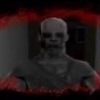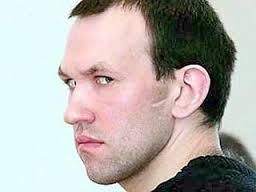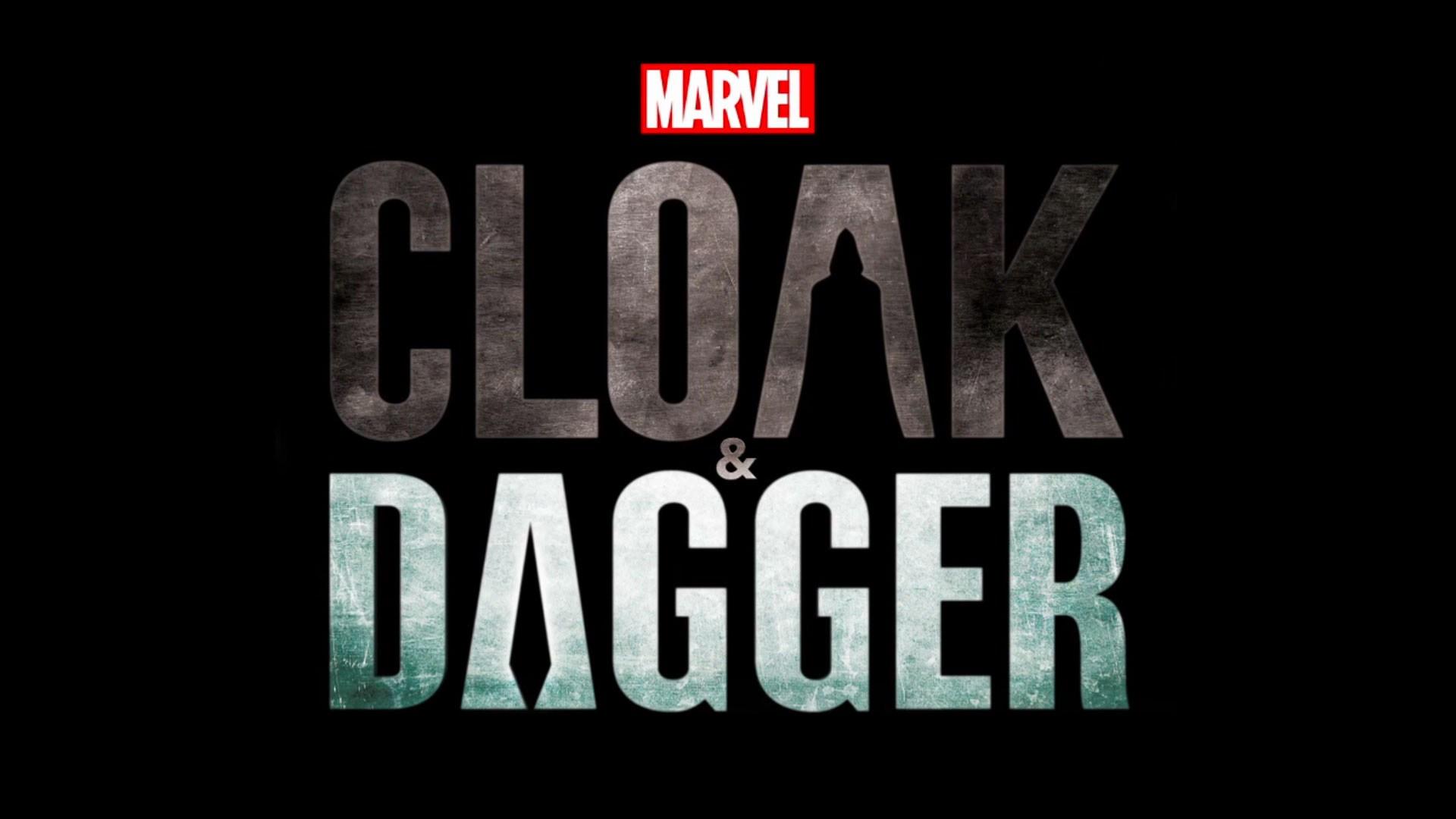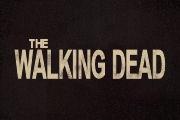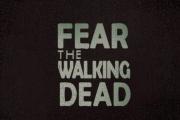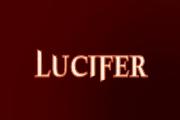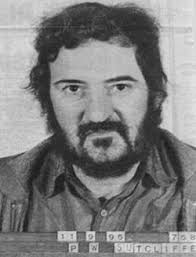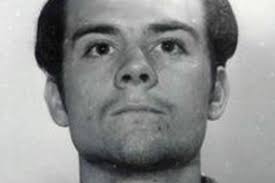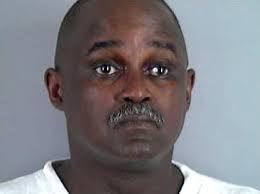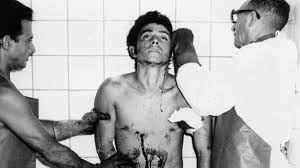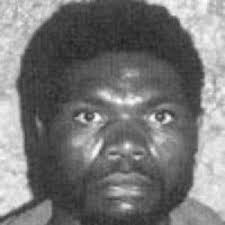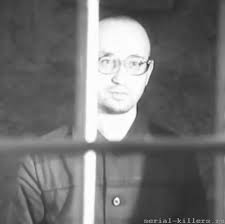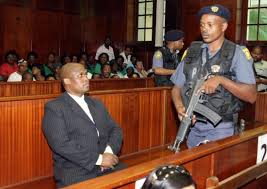Kaspars Petrovs (born 1978) is a Latvian serial killer. He was convicted of the murder of thirteen elderly women by the Riga Regional Court on May 12, 2005 and sentenced to life in prison. He was also convicted of robbery and inflicting serious bodily injury.
He had been charged with robbing and strangling 38 women between 2000 and 2003, but the Riga Regional Court said murder could only be proved in 13 of the cases. Many of the other women were initially thought to have died of natural causes and were buried without undergoing autopsies, Vitolina said. During the trial, Petrovs admitted robbing the women but said he strangled them only so they would lose consciousness. It was not immediately clear whether he would appeal. Investigators said Petrovs, who had been homeless in Riga for three years, followed his victims home and entered their apartments by force or by posing as a worker with the country's state-owned natural gas company. Once inside, they said, Petrovs would kill his victims and rob them. At several of the crime scenes, there were no obvious signs of struggle and police initially assumed some victims had died of natural causes. He apologized to victims' families in court Thursday and asked for their forgiveness, Baltic news agency BNS reported. "I can not return the victims to life by words, but I wish they were still alive, that nothing had happened and I wasn't here. I would rather be sitting on the street, subsisting on bread and water," he was quoted as saying.
Peter William Sutcliffe was the first of six children born to John and Kathleen Sutcliffe, on 2 June 1946, in Bingley, Yorkshire. As a boy he was reserved, and preferred spending time with his mother, finding it difficult to make friends at school, and he was often bullied. He left school aged fifteen, with no clear career focus, and his early working life was spent in a number of short-lived, menial occupations, which included a stint as a gravedigger. Between November 1971 and April 1973 Sutcliffe worked at the factory of Baird Television Ltd, on the packaging line. He left when he was asked to go on the road as a salesman.
Outwardly he presented as a diligent, likeable individual, if a little reserved, and, in 1966, he met the daughter of Czech immigrants, Sonia Szurma, whom he courted and eventually married in August 1974. They moved in with her parents, as his chequered work history meant that they had insufficient funds to buy their own home. During the time of their courtship, Sutcliffe had developed an obsession with prostitutes that he indulged together with a friend, Trevor Birdsall, and they spent a large portion of their spare time cruising red-light districts in the Yorkshire area. This obsession continued after their marriage and the acquisition of his HGV licence in June 1975, and his subsequent work as a lorry driver, took him away from home more than ever, enabling him to indulge his obsession without fear of detection. There is speculation that a bad experience with a prostitute, during one of these forays, which he was believed to have been conned out of money, it was said to be the fuel of his violent hatred of these women that resulted in the death of thirteen women, and the vicious attack of seven others.
Sutcliffe committed his first assault on an older prostitute whom he had met whilst searching for the woman who had previously tricked him out of money. He had left his friend’s mini-van and walked up Saint Pauls Road, Bradford, until he was out of sight. When he came back, he was out of breath, as if he had been running. He told his long-term friend Trevor Birdsall, who was the driver of the vehicle that he was in, to drive off quickly. Sutcliffe said that he had followed a prostitute into a garage and hit her over the head with a stone in a sock. According to his statement, Sutcliffe stated, “I got out of the car, went across the road and hit her. The force of the impact tore the toe off the sock and whatever was in it came out. I went back to the car and got in it”. When the police visited his home the next day, they informed him that the woman, who bore no resemblance to the prostitute who had tricked him out of £10, had noted down Birdsall’s mini-van vehicle registration plate. Sutcliffe admitted that he had hit her over the head, but claimed that it was only with his hand. The police told him he was “very lucky” as the prostitute did not want anything more to do with the incident, she was a known prostitute and hercommon-law husband was serving a sentence for an assault. Sutcliffe committed his second assault on the night of 5 July 1975 in Keighley. He attacked Anna Rogulskyj, who was walking alone, striking her unconscious with a ball-peen hammer and slashing her stomach with a knife. Disturbed by a neighbour, he left without killing her. Rogulskyj survived after extensive medical intervention but was emotionally traumatised by this attack.
Sutcliffe attacked Olive Smelt in Halifax in August. Employing the same modus operandi he struck her from behind and used a knife to slash her, though this time above her buttocks. Again he was interrupted, and left his victim badly injured but still alive. Like Rogulskyj, Smelt suffered emotional scars from the attack, including clinical depression. On 27 August, Sutcliffe attacked 14 year old Tracy Browne in Silsden. He struck her from behind and hit her on the head five times while she was walking in a country lane. Sutcliffe was not convicted of this attack, but confessed to it in 1992. The first victim to lose her life was Wilma McCann, on 30 October. McCann was a mother of four from the Chapeltown district of Leeds. Sutcliffe struck her twice with a hammer before stabbing her 15 times in the neck, chest and abdomen. Traces of semen were found on the back of her underwear. An extensive inquiry, involving 150 police officers and 11,000 interviews, failed to uncover the culprit. One of McCann’s daughters committed suicide in December 2007, reportedly after suffering years of torment over her mother’s death.
Sutcliffe committed his next murder in January 1976, when he stabbed Emily Jackson 51 times in Leeds. In dire financial straits, Jackson had been using the family van to exchange sexual favours for money, a fact which shocked family and neighbours when it was revealed after the murder. Sutcliffe hit her on the head with a hammer and then used a sharpened screwdriver to stab her in the neck, chest, and abdomen. Sutcliffe also stamped on her thigh, leaving behind an impression of his boot. Sutcliffe attacked Marcella Claxton in Roundhay Park, Leeds, on 9 May. Walking home from a party, she was given a lift by Sutcliffe. When she later got out of the car to urinate, Sutcliffe hit her from behind with a hammer. She was left alive and was able to testify against Sutcliffe at his trial. On 5 February 1977 he attacked Irene Richardson, a Chapeltown prostitute, in Roundhay Park. Richardson was bludgeoned to death with a hammer. Once she was dead, he mutilated her corpse with a knife. Tyre tracks left near the murder scene resulted in a long list of possible suspect vehicles. Two months later, on 23 April 1977, Sutcliffe killed Bradford prostitute Patricia “Tina” Atkinson in her flat, where police found a bootprint on the bedclothes. Two months later Sutcliffe committed another murder in Chapeltown, claiming his youngest victim, 16-year-old Jayne MacDonald, on 26 June. She was not a prostitute. In the public perception, her death showed that every woman was a potential victim. Sutcliffe seriously assaulted Maureen Long in Bradford in July. He was interrupted and left her for dead. A witness misidentified the make of his car. More than 300 police officers working the case amassed 12,500 statements and checked thousands of cars, without success. On 1 October 1977 Sutcliffe murdered Manchester prostitute Jean Jordan. Her body was found ten days later and had obviously been moved several days after death. In a later confession, Sutcliffe stated he had realised that the new £5 note he had given her was traceable. After hosting a family party at his new home, he returned to the wasteland behind Manchester’s Southern Cemetery, where he left the body, to retrieve the note. Unable to do so he mutilated Jordan’s corpse and moved the location of the body. The following morning, Jordan was discovered by actor Bruce Jones, who at that time was a local dairy worker. He had an allotment on the land adjoining the site where the body was found and was searching for disused house bricks when he made the discovery.The £5 note, hidden inside a secret compartment in Jordan’s handbag, offered a valuable piece of evidence. The note was new, allowing it to be traced to branches of the Midland Bank in Shipley and Bingley. Police analysis of bank operations allowed them to narrow their field of inquiry to 8,000 local employees who could have received it in their wagepacket. Over three months the police interviewed 5,000 men, including Sutcliffe, whom they did not connect to the crime. On 14 December Sutcliffe attacked another Leeds prostitute, Marilyn Moore. Moore survived and provided police with a description of her attacker. Tyre tracks found at the scene matched those from an earlier attack.
The police discontinued the search for the person who received the £5 note in January 1978. Although Sutcliffe was interviewed about the £5 note, he was not investigated further (he would ultimately be contacted, and disregarded, by the Ripper Squad on several further occasions). That month, Sutcliffe killed again. His victim was 21-year-old Bradford prostitute, Yvonne Pearson. Sutcliffe hid her body under a discarded sofa and it was not found until March. He killed 18-year-old Huddersfield prostitute Helen Rytka, on the night of 31 January. Her body was found three days later. On 16 May, Sutcliffe killed again after a three-month hiatus. The victim was Vera Millward whom he killed during an attack in the car park of Manchester Royal Infirmary.
Almost a year passed before Sutcliffe attacked again. During this period, in November 1978, his mother Kathleen died, aged 59. On 4 April 1979 Sutcliffe killed a 19-year-old building society clerk, Josephine Whitaker. He attacked her on Saville Park Moor, Halifax, as she was walking home. Despite new forensic evidence, police efforts were diverted for several months following receipt of a taped message purporting to be from the murderer. The message taunted Assistant Chief Constable George Oldfield who was leading the investigation. The tape contained a man’s voice saying “I’m Jack. I see you’re having no luck catching me. I have the greatest respect for you, George, but Lord, you’re no nearer catching me now than four years ago when I started.” Based on the recorded message police began searching for a man with a Wearside accent, which was narrowed down to the Castletown area of Sunderland. The message was much later revealed to be a hoax. The hoaxer, dubbed “Wearside Jack”, sent two letters to police in 1978, that boasted of his crimes. The letters, signed “Jack The Ripper”, claimed responsibility for the murder of 26-year-old Joan Harrison in Preston in November 1975. (On 20 October 2005,John Samuel Humble, an unemployed alcoholic and long-time resident of the Ford Estate area of Sunderland, a mile from Castletown, was charged with attempting to pervert the course of justice for sending the hoax letters and tape. He was remanded in custody. On 21 March 2006 Humble was convicted and sentenced to eight years in prison.) On 1 September Sutcliffe murdered 20-year-old Barbara Leach. Leach was a Bradford University student killed and her body dumped at the rear of 13 Ash Grove, under a pile of bricks, close to the university and her lodgings. It was his sixteenth attack. The murder of a woman who was not a prostitute again alarmed the public and prompted an expensive publicity campaign, which emphasised the Wearside connection. Despite the false Wearside lead, Sutcliffe was interviewed on at least two further occasions in 1979. Despite matching several forensic clues and being on the list of 300 names in connection with the £5 note, he was not strongly suspected. In total, Sutcliffe was interviewed by the police on nine occasions.
In April 1980 Sutcliffe was arrested for drunk driving. While awaiting trial on this charge, he killed two more women. In April 1980 Sutcliffe was arrested for drunk driving. While awaiting trial on this charge, he killed two more women. He murdered 37-year-old Marguerite Walls on the night of 20 August, and 20-year-old Jacqueline Hill, a student at theUniversity of Leeds, on the night of 17 November. He also attacked two other women who survived. They were Dr. Uphadya Bandara, attacked in Leeds on 24 September, and 16-year-old Theresa Sykes, attacked in Huddersfield on the night of 5 November. On 25 November, Trevor Birdsall, an associate of Sutcliffe reported him to the police as a suspect. This information vanished into the enormous amount of paperwork already creates. Hill was to be the Ripper’s last victim. Over the second half of 1980, police became increasingly sceptical of the accuracy of the “Wearside Jack” profile, and forces were instructed not to discount potential suspects purely on the grounds of their accents.
Millgarth Police Station in Leeds city centre, where the Yorkshire Ripper police investigation was conducted. On 2 January 1981, Sutcliffe was stopped by the police with 24-year-old prostitute Olivia Reivers in the driveway of Light Trades House, Melbourne Avenue, Broomhill, Sheffield, in South Yorkshire. A police check revealed the car was fitted with false number plates and Sutcliffe was arrested for this offence and transferred to Dewsbury Police Station, West Yorkshire. At Dewsbury he was questioned in relation to the Yorkshire Ripper case as he matched so many of the physical characteristics known. The next day police returned to the scene of the arrest and discovered a knife, hammer and rope he had discarded when he briefly slipped away from the police after telling them he was “bursting for a pee”. Sutcliffe had hidden a second knife in the toilet cistern at the police station when he was permitted to use the toilet. The police obtained a search warrant for his home at 6 Garden Lane in the Heaton district of Bradford and brought his wife in for questioning. When Sutcliffe was stripped of his clothing at the police station he was wearing a V-neck sweater under his trousers. The sleeves had been pulled over his legs and the V-neck exposed his genital area. The front of the elbows were padded to protect his knees as, presumably, he knelt over his victims’ corpses. The sexual implications of this outfit were held to be obvious, but it was not communicated to the public until the 2003 book, Wicked Beyond Belief: The Hunt for the Yorkshire Ripper, written by Michael Bilton. After two days of intensive questioning, on the afternoon of 4 January 1981 Sutcliffe suddenly declared he was the Ripper. Over the next day, Sutcliffe calmly described his many attacks. Weeks later he claimed God had told him to murder the women. He displayed emotion only when telling of the murder of his youngest victim, Jayne MacDonald, and when he was questioned about the murder of Joan Harrison, which he vehemently denied. He was charged at Dewsbury on 5 January.
At his trial, Sutcliffe pleaded not guilty to 13 counts of murder, but guilty to manslaughter on the grounds of diminished responsibility. The basis of this defence was his claim that he was the tool of God’s will. Sutcliffe first claimed to have heard voices while working as a gravedigger, that ultimately ordered him to kill prostitutes. He claimed that the voices originated from a headstone of a deceased Polish man, Bronisław Zapolski,and that the voices were that of God. He also pleaded guilty to seven counts of attempted murder. The prosecution intended to accept Sutcliffe’s plea after four psychiatrists diagnosed him with paranoid schizophrenia. However, the trial judge, Mr Justice Boreham, demanded an unusually detailed explanation of the prosecution reasoning. After a two-hour representation by the Attorney-General Sir Michael Havers, a 90-minute lunch break and a further 40 minutes of legal discussion, he rejected the diminished responsibility plea and the expert testimonies of the four psychiatrists, insisting that the case should be dealt with by a jury. The trial proper was set to commence on 5 May 1981. The trial lasted two weeks and despite the efforts of his counsel James Chadwin QC, Sutcliffe was found guilty of murder on all counts and sentenced to life imprisonment.The trial judge said that Sutcliffe was beyond redemption, and that he hoped that he would never leave prison. He recommended a minimum term of 30 years to be served before parole is considered. This recommendation meant that Sutcliffe would have been unlikely to be freed until at least 2011, at the age of 65. On 16 July 2010 this sentence was extended to a full life term, meaning that Sutcliffe will not leave prison alive, barring any judicial developments to the contrary.
After his trial, Sutcliffe admitted two further attacks to detectives. It was decided at the time that prosecution for these offences was “not in the public interest”. West Yorkshire Police have made it clear that the female victims wish to remain anonymous.
Born into a strict Roman Catholic family, Herbert Mullin began life on April 18, 1947 in Fenton, California. Herbert was a good child, excelling in school quickly and was voted “most likely to succeed” by his high school chums. He was athletic, fit, and very handsome, always helpful and polite to others. His only strange distinction was his oddly close relationship with his best friend Dean Richardson. Just out of high school, at 17, Herbert became engaged to his longtime girlfriend, intending to begin a life with children and a little household.
At 18, Herbert’s life suddenly crumbled when Dean was killed in a car accident. Devoted deeply to Dean, Herbert mourned the loss of his friend in bizarre ways. Lovingly setting up a shrine for Dean in his bedroom complete with photographs and trinkets and old toys, Herbert could not seem to get past his grieving for Dean. He broke up with his girlfriend, announcing that he was a homosexual. Dean’s memorabilia was never removed from Herbert’s bedroom from then on. Around this time, Herbert’s family began to discover strange behavior in Herbert. Though it is unknown if there was a history of mental illness in the family, Herbert began having fits of echopraxia, a well known symptom of schizophrenia. His manner became erratic as well. Herbert preferred to be alone as often as possible, talked to himself, believed others were plotting against him and continuously thought he was being followed by someone that wanted to harm him. To calm himself, Herbert turned to hallucinogenic drugs, thinking they might oppose the gradual confusion that was blocking his thought processes. The drugs only worsened his thought patterns, the limb he was desperately clinging to beginning to slip quickly from his grasp.
After seeking out a doctor, Herbert disclosed his symptoms, believing he might be going mad. The doctor diagnosed Herbert with severe paranoid schizophrenia, and he was placed in a mental hospital for a year. When treatment proved to be working, Herbert started to feel better and well enough to leave the hospital. Like many sufferers of diseases, especially ones that affect the mind, Herbert must have stopped treatment soon after he left the hospital, for the voices in his head began to haunt his psyche again. This time, it wasn’t just the usual voices telling him to do unpleasant things, it was Satan himself, urging Herbert to kill. On October 13, 1972, Satan sent Herbert out onto the streets to find a suitable person that must be annihilated. The prey was chosen apparently at random, as were all of Herbert’s victims. Herbert found a lowly tramp named Lawrence White, searching thorough a garbage can. Clubbing White to death, Herbert found that Satan was not satisfied with only one kill. Herbert would have to again find another person undeserving of life, and he did, two weeks later. A Santa Cruz University a student named Mary Guilfoyle, enjoying a long walk in a park, found herself face to face with Herbert. Seeming wrong and disagreeable in some way, Guilfoyle attempted escape from the man following her. Herbert produced a long knife and stabbed the girl repeatedly until she was well beyond death. With the comforting words of Satan whispering in his ear, Herbert continued his slaughter by pulling out her insides and leaving them scattered all around her body.
Not long after Guilfoyle’s death, Herbert found himself conflicted with what he had done. He understood that something was wrong with killing, but not his intent. Satan had orchestrated all of the horrid acts, and Herbert decided that he must be stopped. To rid his conscious of guilt, Herbert sought out a priest to talk with. He confessed everything he had done, omitting no details. After speaking about what he had done, Herbert was not only horrified with his crimes, but slightly and clearly began to hear Satan’s slow whispering in his ear again. Satan commanded the blood of the priest, and Herbert realized that the priest might go to the police about the recent killings. Herbert, in his diseased mind, had only one choice then. He stabbed the priest to death in the confessional, left the body to be found later, and went on his way. In December of 1972, Herbert began a rampage that shocked all of Santa Cruz. Buying his first gun, Herbert had been told by Satan that this would be a cleaner way of killing, and Herbert could get away with it easily. In one day, Herbert shot five people to death, two of them small children. He was never identified because his victims were his only witnesses. Satan continued to converse with Herbert, telling him that his crimes were for the good of mankind. There was going to be a great earthquake, Satan warned, and Herbert’s victims were grateful to be taken before the disaster could occur. Herbert maintained that what he was doing was good, helpful, and actually a good idea. The next five murders occurred within two weeks of each other, showing the severity of Herbert’s psychotic episodes related to his schizophrenia. After finding four teenagers camping out at Cowell State Park in Santa Cruz, Satan allowed Herbert to shoot them all, assuring Herbert that he was doing a fine job. The final murder that took place was on February 13, 1973. An old man, tending to his garden was shot by Herbert as he passed in his car. Luckily, a neighbor was present at the time and was able to write down the registration number on Herbert’s car.
Not long after the police were phoned, Herbert was hauled into questioning by police. Mullin confessed to all 13 murders, telling police that Satan was the mastermind behind it all. The lawyer plead with the judge that Herbert could not be guilty because he was insane. Herbert told the police that he was trying to save California from an earthquake by killing innocent people. The jury saw Herbert fit to stand trial and was charged with 10 murders, found guilty on two counts of two counts of first degree murder and eight counts of second degree murder. In July 1973, Herbert Mullen was sentenced to life imprisonment, eligible for parole in 2025. Classified by professional doctors as a common example of a severely violent paranoid schizophrenic, Herbert Mullin was not given the right or the opportunity to serve out his sentence at a mental hospital, where he could be medicated properly and guarded for any signs of deviance. Without treatment, Herbert’s condition may not only worsen, but ruin him completely. His pal and constant companion, Satan, might continue to hurt and ultimately advise Herbert to kill others or himself.
Prosecutors say that while Lorenzo Gilyard was escaping detection as a serial killer for two decades, advances in DNA testing were being made that would eventually link him to seven women who were killed in Kansas City in 1986 and 1987. "The defendant wasn’t counting on the fact that science would catch up with him, but it did," said Ted Hunt, chief trial assistant, during closing arguments in the murder trial. "Twenty years later, a part of his own body is pointing a finger back at him." Six other murder counts, including one stemming from the death of an Austrian national, were dropped last week as the trial got under way, although prosecutors could refile those charges later.
Gilyard, a former trash company supervisor, would face life in prison if convicted of any of the slayings. His fate is being decided by Jackson County District Judge John O’Malley. Prosecutors made DNA evidence linking Gilyard to all seven women the centerpiece of their presentation. The cases were connected in April 2004 when the police department’s crime lab tested evidence from unsolved homicides using a federal grant. His semen or seminal fluid was found on six of the women, and his hair was found on the seventh victim. All of the victims were left in sexually compromising positions. But defense attorney Susan Elliott said the lifestyles of the victims - all but one of whom were prostitutes - suggested it was not only probable but likely that they had sexual contact with other men. The defense went through each of the cases suggesting alternatives, including that one victim was killed as retaliation for talking to the FBI about a drug supplier and that another had been threatened by a boyfriend before her death.
Francisco Antonio Laureana was an Argentine serial killer who raped and murdered 13 women in a six-month period from 1974 to 1975. He would strangle his victims and occasionally shoot them with a handgun. He was killed in a shootout with police on February 27, 1975. A composite sketch had been made of him by a man he had shot at after fleeing from a murder. Laureana was married and had three children.
Johannes Mashiane AKA The Beast of Atteridgeville is a South African rapist and serial killer who accounted for 13 victims before committing suicide in 1989. Mashiane started his murderous activity circa 1977 by killing his girlfriend. He was sentenced to five years' imprisonment and was released in 1982. After being released, he immediately started his spate of murder and sodomyaccounting for the deaths of at least 12 young boys by strangulation or stoning. One victim is known to have survived Mashiane's attention.
Vasiliy Kulik was born in Irkutsk Oblast, Soviet Union to an aristocratic family. His father was a doctor of Biological Sciencesand writer, his mother a school-headmistress. A few years later, Kulik left home and began work as a medic in the Irkutsk Emergency Station. He married and had three sons. After his arrest, the police interviewed the Kulik family. His mother told the police that her son had grown weak and had developed a limp. She said that her son had tortured animals as a child, and that he had assumed a dominant male persona in his manner of dress and in his interests. His sisters reported that he was selfish and cruel. Kulik grew up in an unstable environment and, when his father died, tried to commit suicide. Kulik became sexually active at an early age and had many girlfriends. In school, he had been involved with a girl but became depressed after she moved to another city. At age 20, he started pursuing older, married women, but was frequently rejected. In 1980, Kulik wrote a novel in which the main character forms a relationship with a nine-year-old girl with the sole purpose of having sex with her. Prior to the murders, Kulik had committed a series of rapes of children. In 1984, he drugged, raped and strangled an elderly woman he encountered on the street. His second victim was an eight-year-old girl. The third was a 53-year-old woman whom he killed with a gun and a kitchen knife. His other victims included six children, the youngest was only 2 years 7 months, and seven elderly women. On 17 January 1986 Kulik was arrested and eventually convicted of 13 murders and near 30 rapes and assaults. He was sentenced to death by firing squad on 11 August 1988. He was executed in 1989.
Li Wenxian was a Chinese serial killer who killed 13 female prostitutes inGuangzhou from 1991 to 1996. He was sentenced to death on December 18, 1996 and executed thereafter. Li's first victim was reportedly found on February 22, 1991 and was described as a woman in her early twenties. The genitals were carved out with a knife and the body showed signs of sexual intercourse. Five more murders occurred in the next six months. The victims were either stabbed or strangled, then dismembered, put in rice bags and dumped in rubbish heaps in Guangzhou. A seventh victim washed ashore in Hong Kong in March 1992. The corpse was assumed to have floated from mainland China as no one was reported missing in Hong Kong. The victim had been slit from throat to stomach, poorly stitched back together and had her fingers severed. Li was identified by a surviving victim in November 1996. He had been described as a farmer from southern Guangdong who migrated to Guangzhou in 1991 and worked for a construction team. Li confessed to the murders and claimed to have been motivated by a hatred for prostitutes that was fueled by him being cheated by one after arriving in Guangzhou. He was convicted of rape, robbery and murder. He was sentenced to death on December 18, 1996 and later executed.
Thozamile Taki, also known as the Sugarcane Killer, is a South African serial killer who killed 13 women aged 18–25, dumping their bodies in agricultural plantations. He lured the woman, promised them jobs but killed them and dumped their bodies in sugarcane fields. He murdered 10 victims in the sugarcane plantations around the town of Umzinto, as well as a further three victims in the tea plantations near Port St Johns, KwaZulu Natal. Body parts of some of his victims are alleged to have been provided to a local traditional healer or sangoma.
The Paturis Park murders are a series of 13 murders of gay men between February 2007 and August 2008. The murders took place in Paturis Park in Carapicuíba, Brazil and perpetrated by an unknown killer dubbed the Rainbow Maniac. São Paulo is the annual stage for the largest gay pride march on Earth and home to one of South America's most vibrant gay communities. But a wave of homophobic murders cast a shadow over one of the most tolerant cities in Latin America. The killer labelled the Rainbow Maniac, was behind the murders of 13 men in Carapicuíba, a city of nearly 400,000 people in greater São Paulo. They were killed in a park used as a gay meeting point. Police also investigated whether the same killer was behind three murders in the neighbouring city of Osasco, where a similar weapon was reportedly used. The killing began on 4 July 2007 when 32-year-old José Cicero Henrique was murdered in the Paturis park. 12 other men have been killed in the park, nine in virtually identical circumstances. Their half naked bodies were dumped in the undergrowth with a .38 caliber bullet in the back of the head and their trousers wrapped around their knees.
